
aviation
10:39, 17-Dec-2017
Second China-made large passenger jet completes first trial flight
CGTN
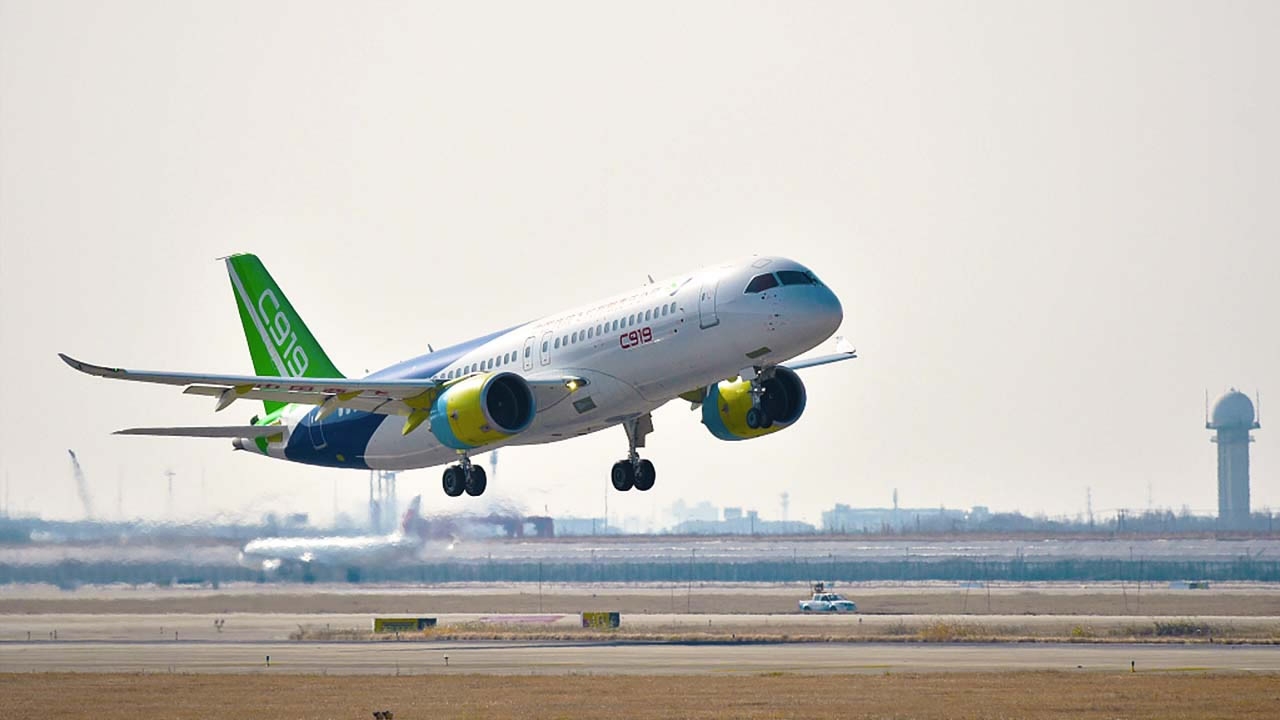
China’s second domestically-built large passenger jet, C919 102, took off on Sunday from the Shanghai Pudong International Airport in its first trial flight.
The flight is aimed at testing multiple key performance indicators, including the aircraft's engines.
It came seven months after China's home-developed large passenger jet, C919, took its maiden flight in Shanghai on May 5.
The name of the aircraft, C919, is meant to convey its status to the world. C stands for China; the number 9 is pronounced "Jiu" in Chinese which has a similar pronunciation to the word for "long lasting"; and 19 refers to the 190 seat capacity in its largest configuration.
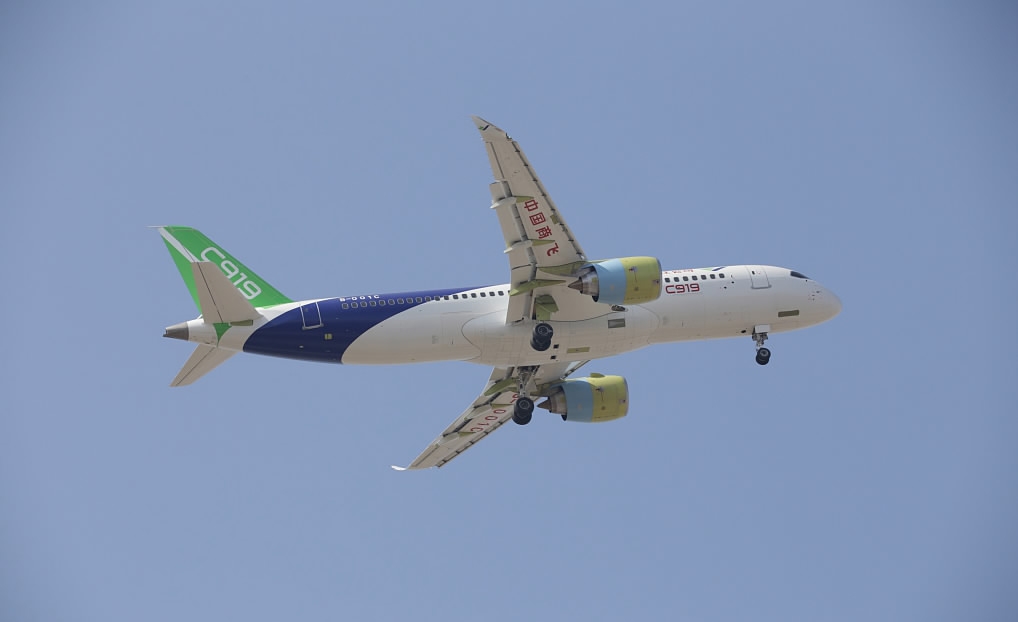
The C919 102's second prototype 10102 flies above Shanghai Pudong International Airport. /VCG Photo
The C919 102's second prototype 10102 flies above Shanghai Pudong International Airport. /VCG Photo
Six prototypes took part in the flight mission in order for the C919 to acquire the airworthiness certification, with each version undertaking different tasks. The follow-up prototypes of the passenger jet are speeding up in production, as they look to enter the market for service soon.
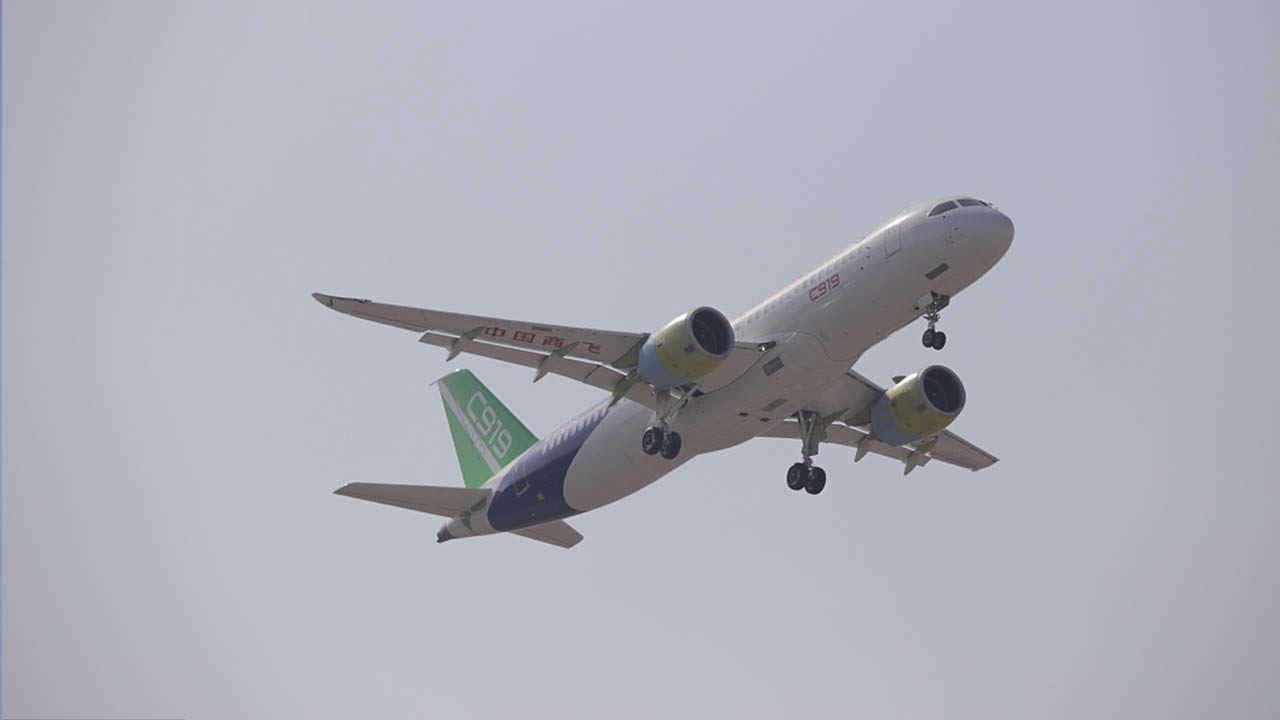
According to Wang Wei, the chief engineer at Commercial Aircraft Corporation of China (COMAC) which manufactures the C919, the first three C919 prototypes are mainly used for testing the jet’s overall performance and key systems, like the dynamic or power system, with the most important one being the engine.
The fourth prototype serves to test the performance of the C919’s mission systems, such as the avionics system, and the electrical power generating system. The fifth and sixth prototypes perform tasks related to serving passengers, including the cabin system, and information system.
"We’re going to test the 22 systems of the C919 in Shanghai, and then the aircraft will fly to more than 120 test sites. We hope that the jet will be capable of making inter-city flights by the end of January, that is our goal,” said Wang.

Engineers walking towards the control room to monitor the test flight mission /VCG Photo
Engineers walking towards the control room to monitor the test flight mission /VCG Photo
The flight marks the beginning of a series of upcoming test flights. Performance flights and qualification test flights are the next step, and the whole process will end with a trial flight and delivery flight.
Only when all the tests have been carried out, can COMAC get the airworthiness certification for C919 and put the jumbo jet to work. That means thousands of hours in the air and more than 1,000 tests successfully completed.
How good is the new C919 jet?
The new C919 passenger jet is a high-performance plane 10 years in the making, and is ready to compete with the industry standard Airbus A320 and Boeing 737.
"We want a plane that is easy to handle. It's just like a car. We want a plane with good performance. I think C919 is very close to aircraft of the similar types," said Cai Jun, C919’s captain.
The narrow-body jet is 38.9 meters long, 11.9 meters high, and has a wingspan of 35.8 meters. It has a range of 5,555 kilometers, with a top speed of about 1,000 kph. It can fly to altitudes as high as 12,100 meters.
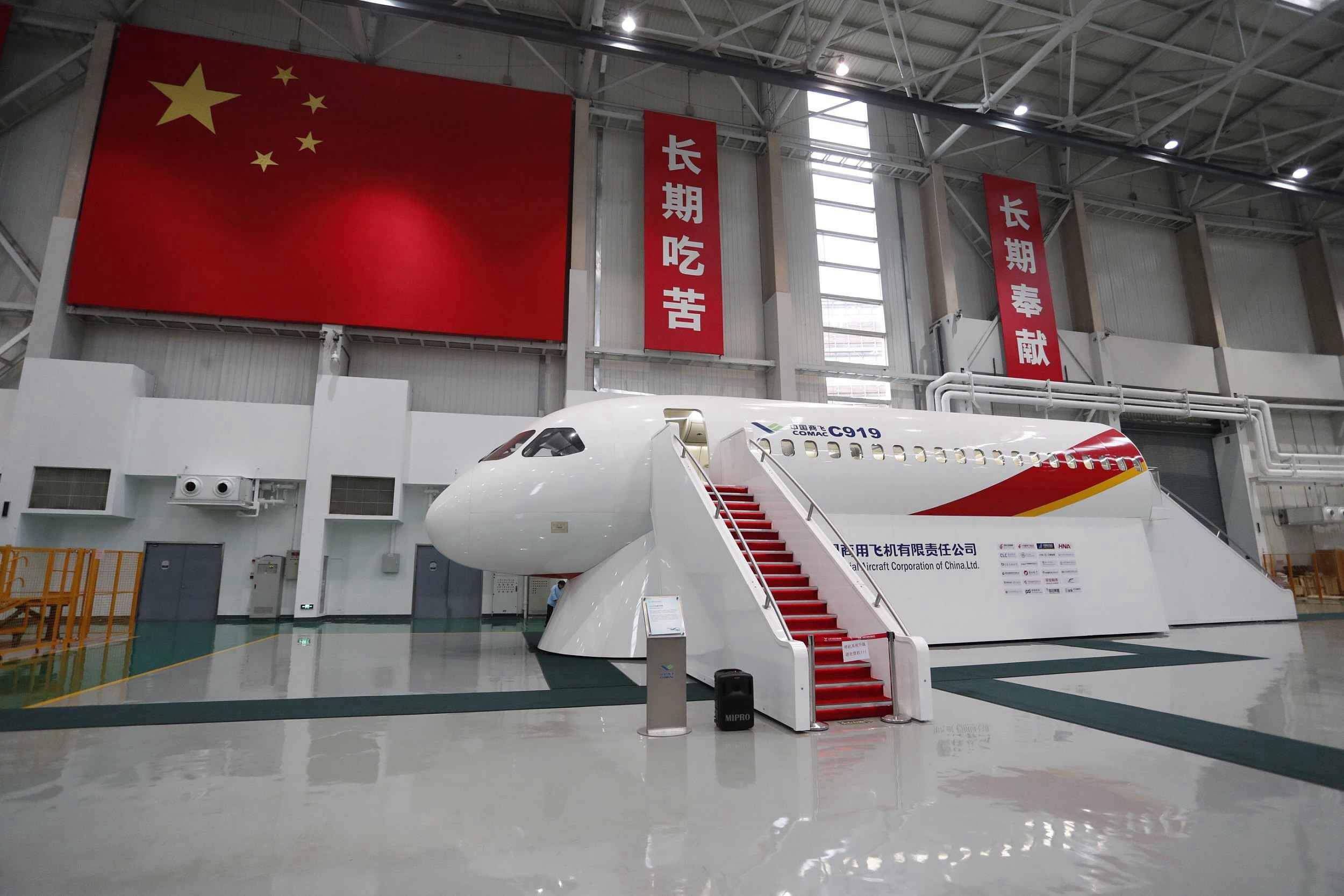
A C919 model seen at COMAC's research center in Shanghai /VCG Photo
A C919 model seen at COMAC's research center in Shanghai /VCG Photo
Aerodynamically-designed wings made from advanced metals and composites help with fuel efficiency while reducing noise levels in the cabin. The cockpit has the latest navigation technology and so-called "fly by wire" computer controls, to help the pilots fly the high-tech plane. The specifications make it competitive with other narrow-body jets.
Because of the incorporation of the world’s cutting-edge technology, greater challenges face C919 to successfully conduct test flights as few previous examples exist for references.
"If the audience insists on knowing whether our homegrown large passenger jet can match those giants from the US and Europe, as an veteran I can ensure them that the C919 was designed at a high level from the very start, at standards up to the world’s most advanced in terms of aviation and manufacturing,” said Qian Jin, an expert in the aviation industry.
“You can trust it,” Qian maintained.
How does the C919 102 differ from the C919 101?
The C919 101 made its maiden flight earlier this year, also in Shanghai. It completed its first long-distance flight on November 10, marking a milestone in China’s aviation industry.
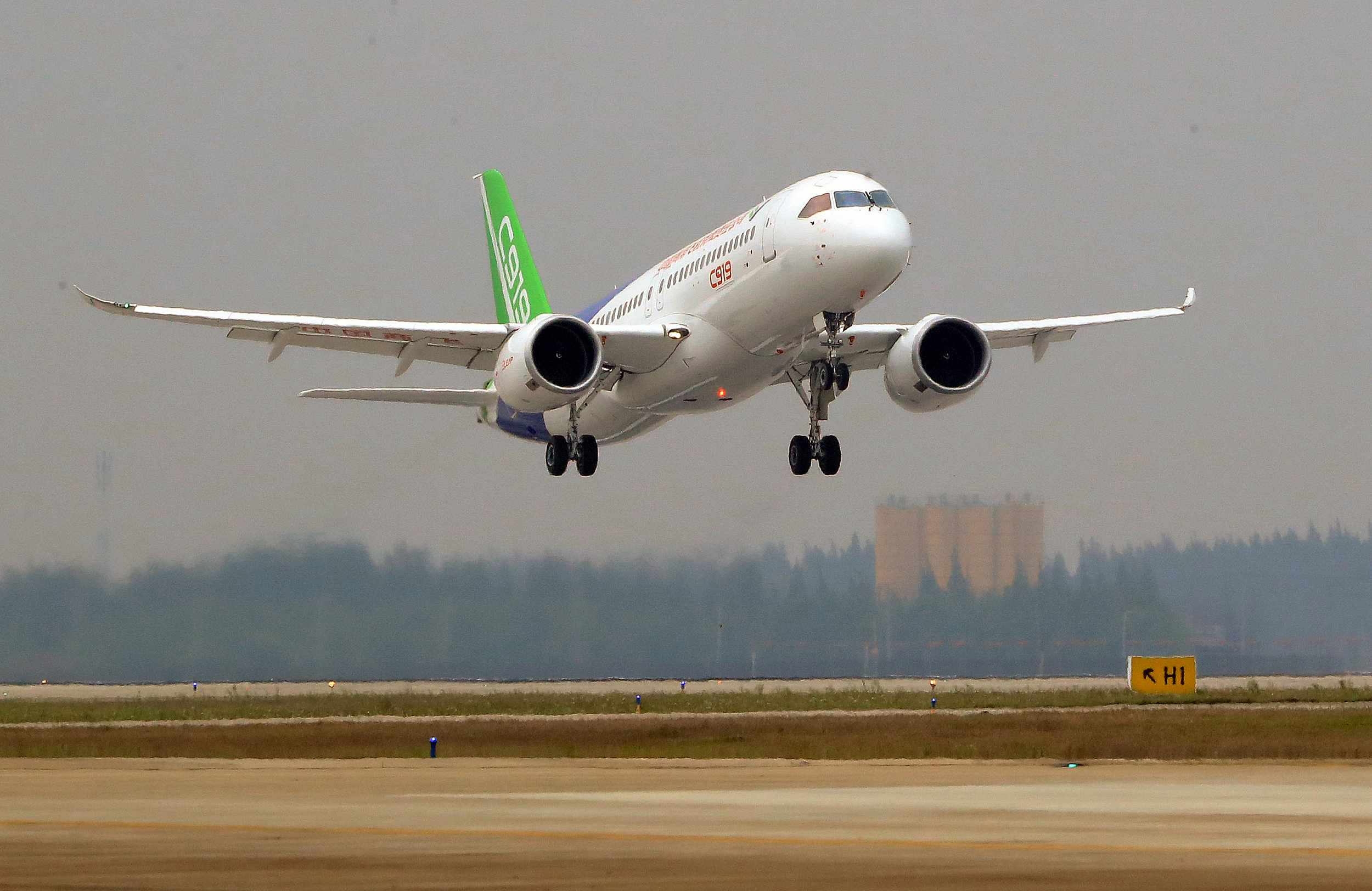
The C919 101 plane successfully finished its maiden flight on May 5, 2017 at Shanghai Pudong International Airport. /VCG Photo
The C919 101 plane successfully finished its maiden flight on May 5, 2017 at Shanghai Pudong International Airport. /VCG Photo
When asked about how different the C919 102 is from its predecessor, an engineer who monitors the test flights in the control room said that the new prototype is able to fly faster, higher and further. Its flight speed is 100 kph more than before and it will fly two altitudes during test flights, compared to one altitude C919 101 flew at.
"The second C919 will be concentrated on its power system, especially its engine," said Wang Yanan, chief editor at Chinese aviation journal Aviation Knowledge. "Modifications on the engine have also been made."
The C919 102 will undergo many more tasks, compared to the 101, and therefore will spend more time in the sky. It was also operated by a group of younger pilots, despite the captain being the same, with the purpose of training new talents.
(CGTN's Xie Zhenqi also contributed to the story.)
For CGTN's coverage: Second C919 takes trial flight in Shanghai Live Replay
1090km

SITEMAP
Copyright © 2018 CGTN. Beijing ICP prepared NO.16065310-3
Copyright © 2018 CGTN. Beijing ICP prepared NO.16065310-3